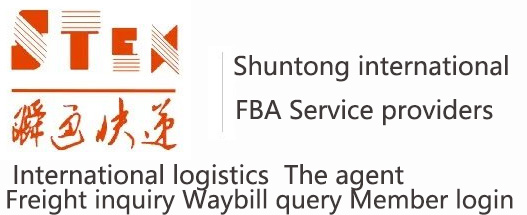The impact of the UK tax reform
The UK tax law reform measures that took effect on January 1, 2021 will maximize the collection of VAT contained in e-commerce sales. For the original text, please refer to the UK government website:
https://www.gov.uk/government/publications/changes-to-vat-treatment-of-overseas-goods-sold-to-customers-from-1-january-2021/changes-to-vat-treatment- of-overseas-goods-sold-to-customers-from-1-january-2021
The key interpretation of the tax reform content is divided into the following six aspects: Focus on the interpretation part of HIGHLIGHT
First, direct overseas orders are sold through e-commerce platforms, and orders below 135 pounds are sold to individual consumers.
The e-commerce platform will be regarded as the "ultimate seller", withholding and collecting 20% of the value-added tax included in the buyer's transaction price, directly reporting and paying to the tax bureau, the seller is the goods supplier of the e-commerce platform, and the account is refunded Will no longer contain VAT. During the entire link process, the package will no longer be charged for import value-added tax due to the new customs declaration and review regulations. In the sales link, one-stop payment is made by the platform, which simplifies the cumbersome accounting procedures of prepayment and deduction in the past.
In this case, the seller does not need to provide or register a VAT number (depending on the platform requirements), but to ensure the integrity and authenticity of the importer and agent information during customs declaration, this is also the current technical difficulty and requires a platform Information exchange and verification between parties, logistics providers, and customs.
Interpretation: For small parcels of less than £135 sent directly from China to individuals in the UK, if they are sold through e-commerce platforms such as Amazon, the physical customs clearance process will provide e-commerce platform merchants (e-commerce sellers) information such as merchant names and Code (if you have an e-commerce VAT number as much as possible), the customs has passed the information verification with the e-commerce platform, and 20% VAT is not charged during customs clearance. The e-commerce platform such as Amazon will collect the payment from the sales according to the platform verification information 20% of the value-added tax is deducted in the middle, and the platform is uniformly submitted to the UK Tax Office. For logistics service providers, customers who need this type of goods provide the above information when placing an order.
Second, direct overseas orders are sold through e-commerce platforms, and orders below 135 pounds are sold to companies.
E-commerce platforms are also regarded as “ultimate sellers” for tax-free sales, and corporate buyers declare and pay taxes and deduct them. This form is called “reverse taxation mechanism”. At the same time, the platform, as the "ultimate seller", issues a 0% tax rate invoice with an additional note "reverse charge: customer to account for VAT to HMRC". The seller's registered tax number is consistent with the tax number provided by the customs declaration.
Interpretation: To put it simply: small parcels of less than £135 that are sent directly from China to British companies (non-individuals), if they are sold through e-commerce platforms such as Amazon, will be subject to 20% value-added tax at the time of cargo logistics clearance. The e-commerce platform issues a 0% tax rate invoice with an additional note "Reverse Charge: Customer pays value-added tax to HMRC"
Third, for overseas orders with a value of less than £135, self-built station sellers must register for the British VAT number VAT and declare accordingly because they are the "ultimate sellers".
One is the B2C form for individual buyer orders, which requires tax-free customs clearance at the customs with their own tax number, and one-stop processing of taxable declarations in the sales link;
Interpretation: That is, customers build their own e-commerce website platforms to sell goods, and send them directly from China to individuals in the UK (small packets worth less than £135). Customers (e-commerce sellers) need to provide their own e-commerce UK VAT tax number ( The practice is analogous to Amazon) and related information. During the customs clearance process, 20% of the value-added tax is not paid, but the e-commerce platform will uniformly pay the value-added tax to the UK tax office based on monthly sales.
The other is for the B2B form of corporate buyer orders, which require tax-free customs clearance at the customs with their own tax number, but the buyer’s value-added tax (VAT) is not charged during the sales process, and 0% declaration is made, which is applied by corporate buyers. "Reverse taxation mechanism" self-declared.
Interpretation: that is, customers build their own e-commerce website platforms to sell goods, and send them directly from China to companies in the UK (small packets with a value of less than 135 pounds) based on the customer's own tax number and the information of British corporate buyers (including VAT tax number) ) Customs clearance is exempt from value-added tax, and then corporate buyers in the UK will make monthly tax declarations on their own.
Fourth, overseas direct shipments, relatively rare single parcels worth more than £135 orders.
At this time, regardless of whether the seller is selling through a self-built station or an e-commerce platform that is only a trading platform, VAT will be directly charged to the buyer during the transaction or temporarily waived. Ideally, the product details page can support a clear agreement on the payment party for customs duties, thereby avoiding disputes caused by double taxation in customs clearance imports and sales transactions.
Situation A: E-commerce sellers must notify the buyer during the customs declaration process to be responsible for paying import taxes for self-collection through the logistics company-contrary to the original intention of online purchase convenience, it will inevitably affect the store evaluation, and even evolve into a return refund.
Situation B: The logistics company collects value-added tax from the buyer in the form of payment on behalf of the logistics company-price and tax split payment can also easily cause the buyer's purchase experience to decline, while increasing the logistics company's operational difficulty and cost. Therefore, it is likely to be replaced by overseas warehouses.
Interpretation: Goods over 135 pounds are officially cleared by B2B, and the customs collects relevant value-added tax during the customs clearance process.
From the current point of view, under the EU tax reform, the tax treatment reform in the form of overseas direct shipments is a huge challenge. It is a test of the actual value verification of the customs border and the logistics company in the package import declaration and the matching of the complete information of the order. The direct hair model sellers have a significant impact.
Fifth, the local inventory in the UK (self-built warehouse or FBA warehouse) is sold through e-commerce platforms and self-built stations, and sold to individual consumers at any value in the form of B2C.
The seller's identity is transformed into the goods supplier of the platform, and the seller completes the original price transaction in the sense of tax law with the 0% tax rate and the platform. As the "ultimate seller", the e-commerce platform intercepts and collects the 20% value-added tax included in the buyer's transaction price, and directly declares and pays it to the tax bureau.
Due to the use of their own tax number for customs clearance and payment of import value-added tax during customs clearance, the seller sells VAT at a 0% tax rate in the output declaration through the tax agent, and applies for a tax refund to the tax bureau to transfer the money to the designated account or keep it as a deduction .
Interpretation: When the UK local tax-paid inventory (value-added tax has been paid during customs clearance) is sold to individuals in the UK, the customer will use the UK's own tax agent for relevant tax treatment (the monthly deduction of input and output tax is calculated, which has nothing to do with logistics companies)
Sixth, local inventory in the UK (self-built warehouse or FBA warehouse) is sold through e-commerce platforms and self-built stations, and sold at any value to corporate buyers in B2B format.
As the new regulations do not cover this situation, the seller will maintain the status quo, collect 20% VAT in the transaction, and submit it to the tax bureau through a tax agency, and provide tax-included invoices to corporate buyers.
Interpretation: When the UK local tax-paid inventory (value-added tax has been paid during customs clearance) is sold to a UK company, the customer will use the UK's own tax agent for relevant tax treatment (the monthly deduction of input and output tax is calculated, which has nothing to do with the logistics company)

 中文
中文 ENG
ENG




